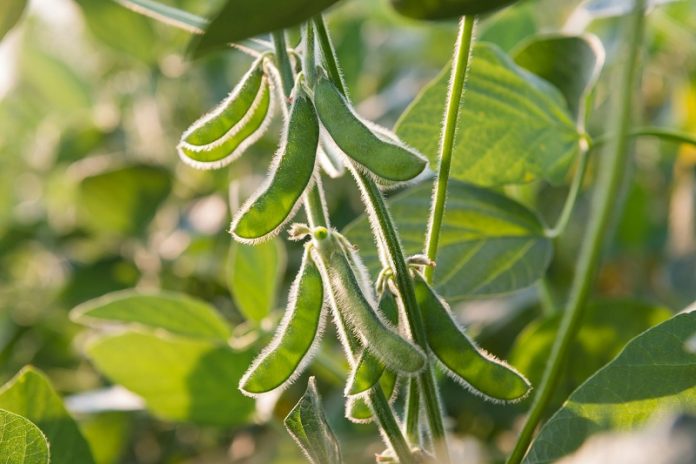
Waterhemp is a troublesome weed for farmers, especially those growing snap beans.
During harvest, waterhemp stems can break off and contaminate the crop with inedible “pods.”
Unfortunately, many herbicides effective against waterhemp also harm snap beans, leaving farmers with limited options.
However, a new study by the University of Illinois Urbana-Champaign and the USDA Agricultural Research Service has identified snap bean plants that can tolerate flumioxazin, a soil-applied herbicide effective against waterhemp.
Even more exciting, the researchers discovered that the genomic region responsible for this tolerance acts as a master switch, controlling multiple genes related to stress resistance.
The study, “Mapping of flumioxazin tolerance in a snap bean diversity panel leads to the discovery of a master genomic region controlling multiple stress resistance genes,” was published in Frontiers in Plant Science.
“Stress tolerance involves many different genes responding to environmental stimuli, making it complex and difficult for plant breeders to enhance,” said lead author Ana Saballos. “But now we believe breeders can manipulate this one gene to control hundreds of others. That’s really exciting.”
Saballos and her team used a diversity panel of 377 snap bean genotypes, representing a century of crop improvement. They planted the seeds and treated the soil with flumioxazin a day later. Although the herbicide reduced plant density by 84% and per-plant biomass by nearly 60%, some genotypes survived almost unscathed.
Upon analyzing the genomes of all 377 snap bean types, the researchers found a genomic region on chromosome 2 linked to flumioxazin tolerance. “It was like an on-and-off switch: survival or not,” said senior author Marty Williams.
This clear switch would typically suggest that the herbicide’s target enzyme, protoporphyrinogen oxidase (PPO), had mutated in tolerant plants, preventing the herbicide from binding and altering its activity. Surprisingly, the gene for PPO was not located in the tolerance-associated genome region.
“Target site resistance usually causes this on-and-off response, so it was surprising the tolerance region wasn’t near the known PPO enzyme locations,” Saballos explained. “We also looked for detoxifying enzymes, including P450s, but didn’t find genes for those either. We had to take another approach.”
Next, the team examined gene expression in tolerant and sensitive plants. They found that while P450 genes were not in the tolerance region, these enzymes were expressed at higher rates in tolerant plants. Saballos suspects a mystery element, possibly a transcription factor, in the tolerance region controls the activation of P450 genes throughout the genome.
The researchers also noted that certain antioxidants were more highly expressed in tolerant plants, while genes related to apoptosis, or “cell suicide,” were expressed at lower rates. This pattern of gene expression could explain not just flumioxazin tolerance but also how plants respond to various environmental stresses.
“Ultimately, we set out to see if flumioxazin could selectively control waterhemp in snap beans,” Williams said. “Unfortunately, most snap bean cultivars don’t have sufficient tolerance to the herbicide.”
“However, the discovery of a single element that can regulate many genes involved in stress tolerance is exciting and valuable for both basic science and applied crop breeding,” Williams added.
The researchers plan to continue exploring this genomic region to better understand its role in stress resistance and to potentially develop snap bean cultivars that can withstand both herbicides and other environmental stresses.



